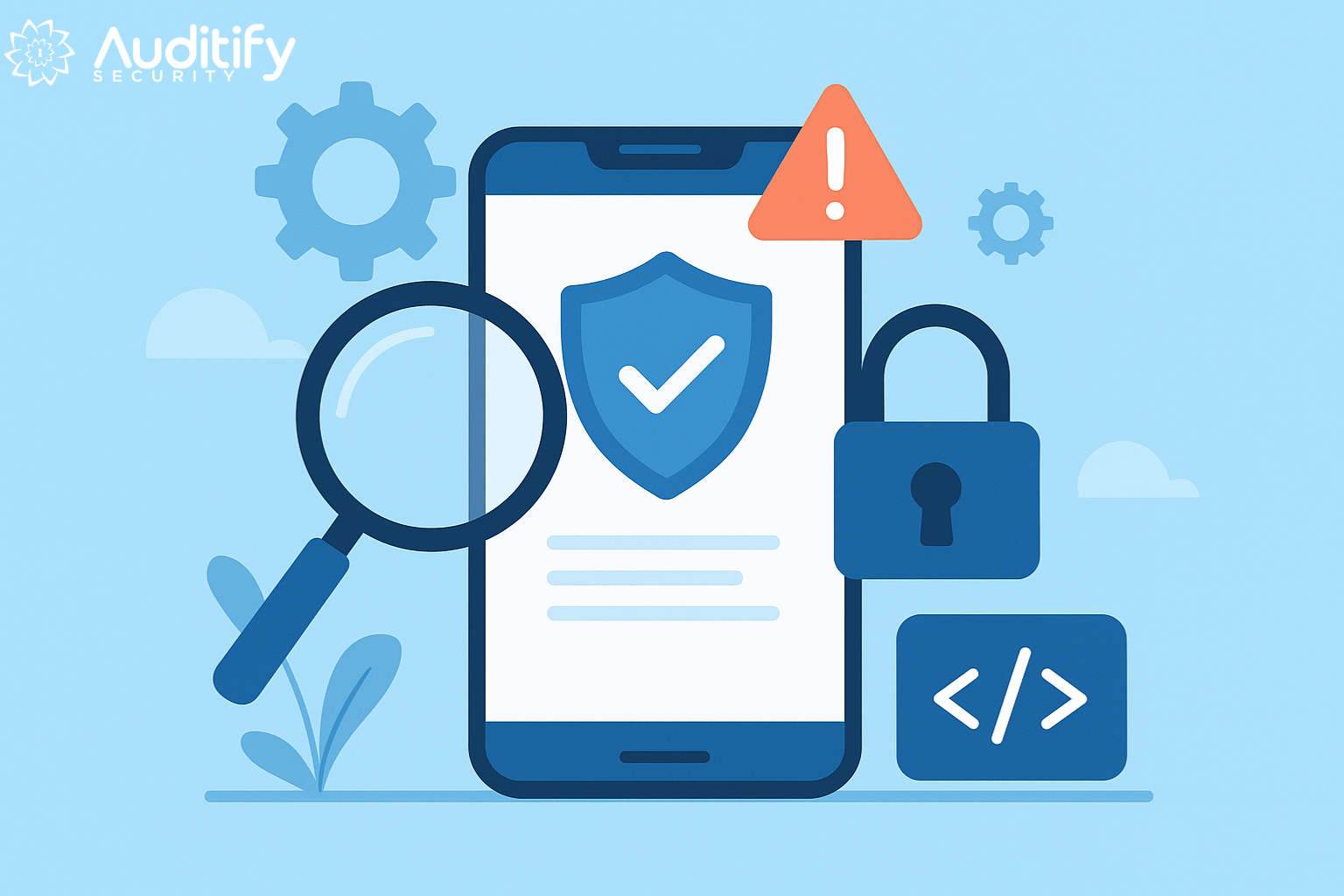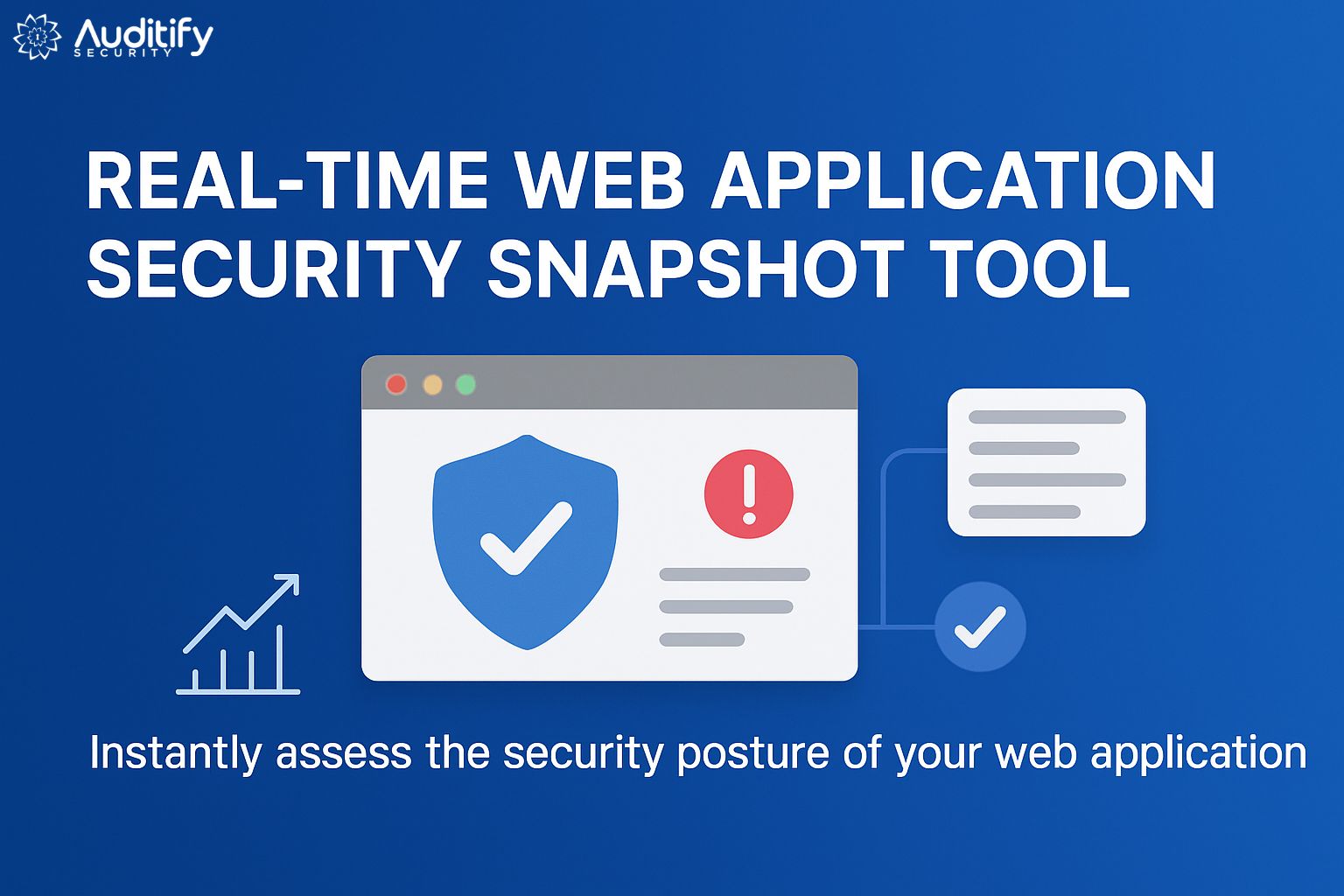Learn what mobile application security testing is and how it protects your apps from cyber threats. Auditify Security helps ensure your mobile applications remain secure, compliant, and resilient against evolving attacks.
In today’s digital world, mobile apps have become the backbone of modern business operations. From banking to healthcare and e-commerce, nearly every industry relies on mobile applications to deliver services and engage with users. However, this heavy reliance on mobile apps has also made them a prime target for cybercriminals. This is where mobile application security testing plays a crucial role.
At Auditify Security, we help organizations safeguard their mobile ecosystems through advanced testing methods, identifying vulnerabilities before attackers can exploit them. In this guide, we’ll explain what mobile application security testing is, why it matters, and how it actually works.
What Is Mobile Application Security Testing?
Mobile Application Security Testing (MAST) is a process that identifies, analyzes, and resolves security weaknesses within mobile apps — whether on Android or iOS platforms. The goal is to ensure that your app can resist cyberattacks, protect user data, and comply with relevant security standards.
This testing isn’t just about running automated scans. It combines static, dynamic, and manual testing methods to evaluate how the app behaves under different conditions. It checks everything from code vulnerabilities and insecure APIs to data storage flaws and permission misconfigurations.
In simple terms, mobile application security testing helps ensure that the app is as secure as it is functional.
Why Mobile Application Security Testing Is Important
Mobile apps often store sensitive information such as login credentials, financial data, or personal health details. Without adequate testing, these apps can unintentionally expose users and organizations to serious risks.
Here’s why mobile application security testing is essential:
1. Protection from Cyberattacks
Hackers are constantly looking for vulnerabilities in mobile apps. Even a small flaw — such as improper encryption or insecure data transmission — can lead to data theft or account takeovers. Security testing helps detect and fix these flaws early in the development cycle.
2. Compliance with Security Standards
Industries such as finance, healthcare, and e-commerce must follow strict compliance regulations like GDPR, HIPAA, and PCI DSS. Mobile app security testing ensures that your applications meet these regulatory requirements and protect user data appropriately.
3. Building User Trust
Users expect their data to be safe. Regular testing demonstrates your commitment to security, enhancing user confidence and brand reputation.
4. Reducing Development Costs
Catching vulnerabilities early is much cheaper than addressing them after a breach. Security testing integrated into the DevSecOps pipeline helps avoid expensive post-release fixes.
5. Preventing Financial and Reputational Loss
A single mobile app breach can cost organizations millions of dollars in fines, lawsuits, and lost trust. Proactive testing helps prevent these scenarios.
Types of Mobile Application Security Testing
There isn’t a one-size-fits-all approach to testing. A comprehensive security assessment includes multiple types of testing, each focusing on different areas of the mobile app.
1. Static Application Security Testing (SAST)
SAST analyzes the source code, bytecode, or binaries of the mobile app without executing it. This helps identify vulnerabilities such as:
Hardcoded passwords or API keys
Input validation issues
Insecure cryptographic practices
Code injection risks
SAST is usually integrated into the development process so developers can fix vulnerabilities before deployment.
2. Dynamic Application Security Testing (DAST)
Unlike SAST, DAST evaluates the running application in real-time. It simulates attacks to identify how the app behaves under malicious conditions. This helps detect:
Insecure authentication mechanisms
Misconfigured sessions
Broken access controls
API security gaps
3. Mobile Device and Network Testing
This type of testing evaluates how the app interacts with mobile devices and networks. It checks for vulnerabilities such as:
Data leakage through unencrypted storage
Insecure Wi-Fi or mobile data transmissions
Weak device permissions
4. Penetration Testing
Mobile app penetration testing is a manual approach where ethical hackers attempt to exploit vulnerabilities. At Auditify Security, our experts perform penetration testing to mimic real-world attacks and uncover complex security flaws that automated tools might miss.
5. API Security Testing
APIs are the backbone of most mobile apps. Testing APIs ensures that data exchanged between the app and server is properly secured, authenticated, and authorized.
How Mobile Application Security Testing Works
The process of mobile application security testing involves several structured steps. At Auditify Security, we follow a proven methodology to ensure accurate and actionable results.
1. Requirement Analysis
Before testing begins, we understand your app’s purpose, architecture, technology stack, and data flow. This helps define the scope and objectives of the security testing.
2. Threat Modeling
Threat modeling identifies potential risks based on how your app processes, stores, and transmits data. This step helps prioritize the most critical vulnerabilities that could impact users and business operations.
3. Static and Dynamic Testing
We perform both static code analysis (SAST) and runtime analysis (DAST) to detect vulnerabilities in code and in live app environments. This dual approach provides comprehensive coverage.
4. Manual Penetration Testing
Our ethical hackers manually test the app for logical flaws, insecure data storage, broken authentication, and privilege escalation vulnerabilities that automated tools often miss.
5. API and Backend Testing
Since most mobile apps rely heavily on APIs, we assess API endpoints for authentication, authorization, and encryption issues.
6. Reporting and Remediation
After testing, we provide a detailed report highlighting vulnerabilities, their severity levels, and actionable remediation steps. Our team also offers consultation to help your developers fix the issues effectively.
7. Retesting and Continuous Security
Once vulnerabilities are patched, we retest the app to ensure that all issues have been resolved. Continuous monitoring and testing are recommended with every app update or new release.
Common Vulnerabilities Found During Testing
Some of the most frequent issues uncovered during mobile application security testing include:
Insecure data storage (unprotected databases or shared preferences)
Weak encryption or improper use of cryptographic algorithms
Hardcoded credentials or API keys
Insecure communication (lack of HTTPS/TLS)
Improper session handling
Unprotected APIs
Reverse engineering risks (e.g., lack of code obfuscation)
Identifying these vulnerabilities early helps organizations prevent data breaches and maintain compliance.
Best Practices for Mobile Application Security
While security testing is essential, it’s most effective when paired with secure development practices. Here are a few best practices recommended by Auditify Security:
Implement Secure Coding Guidelines: Follow OWASP Mobile Security best practices.
Encrypt Sensitive Data: Use AES-256 or RSA encryption for stored and transmitted data.
Regularly Update Libraries: Outdated SDKs and third-party libraries can introduce vulnerabilities.
Use Multi-Factor Authentication (MFA): Strengthens login security.
Limit App Permissions: Grant only the minimum required permissions.
Integrate Security Testing in CI/CD Pipelines: Automate security checks as part of DevSecOps.
Why Choose Auditify Security for Mobile Application Security Testing
At Auditify Security, we specialize in providing comprehensive mobile application security testing services tailored to your business needs. Our security experts combine advanced tools with manual expertise to deliver accurate and actionable insights.
Our Services Include:
Static & dynamic analysis
Mobile app penetration testing
API security assessment
Compliance checks (GDPR, HIPAA, PCI DSS)
Remediation guidance and revalidation
We don’t just identify vulnerabilities — we help you build a secure mobile ecosystem that your users can trust.
Conclusion
As mobile apps continue to dominate digital interactions, ensuring their security is more important than ever. Mobile application security testing is not just a technical formality — it’s a critical safeguard against data breaches, compliance violations, and reputational damage.





